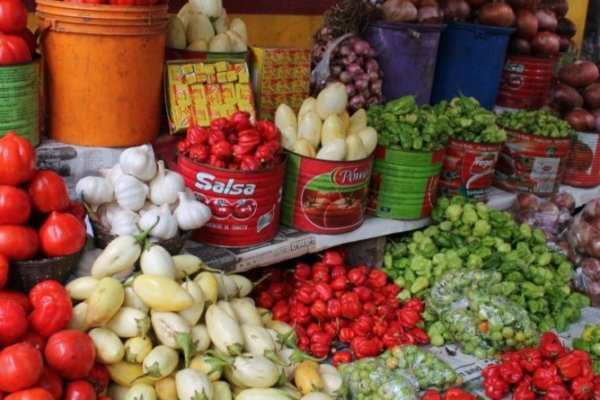Market price of vegetables in Ghana

In Ghana, the market price of vegetables is something that affects farmers, consumers, and the economy as a whole. Understanding market prices is important for all parties involved, as it can have a significant impact on income, food security, and economic growth.
For farmers, understanding the market price of vegetables is crucial to making informed decisions about what to plant, when to harvest, and where to sell their crops. If farmers have accurate information about market prices, they can adjust their production accordingly and sell their crops at the most profitable times and locations. This can increase their income and help support their families and communities.
Consumers also benefit from understanding market prices, as they can make informed decisions about what to buy and where to buy it. If prices are high in one market, for example, consumers may choose to shop at a different market or buy a different vegetable altogether. Understanding market prices can also help consumers plan their budgets and avoid overpaying for produce.
The economy as a whole benefits from a transparent and efficient market for vegetables. If market prices are stable and predictable, farmers can plan their production more effectively and invest in new technologies and practices that can increase yields and efficiency. This can lead to increased agricultural productivity and economic growth in rural areas.
However, understanding market prices can be a challenge in Ghana, particularly for small-scale farmers who may not have access to up-to-date information or the resources to transport their crops to different markets. Also, factors like climate change, pests and diseases, and infrastructure limitations can all affect market prices and make it difficult for farmers to adapt.
List of commonly consumed vegetables in Ghana
Below is a list of commonly consumed vegetables in Ghana. These vegetables are often used in traditional Ghanaian dishes, such as stews, soups, and salads. They provide a range of essential vitamins and minerals and are an important part of a healthy diet.
- Tomatoes
- Onions
- Peppers (bell peppers and hot peppers)
- Leafy greens (spinach, kale, collard greens, etc.)
- Okra
- Eggplant
- Cabbage
- Carrots
- Sweet potatoes
- Beans (black-eyed peas, cowpeas, etc.)
- Squash (pumpkin, butternut, etc.)
- Beetroot
- Radishes
- Cucumbers
Market prices of vegetables in Ghana
The market prices of vegetables in Ghana have been a source of concern for many consumers. The prices of many vegetables have been on the rise, making them less affordable for many Ghanaians.
Tomatoes are one of the most widely consumed vegetables in Ghana. However, the price of tomatoes has been fluctuating over the years. In 2019, the price of tomatoes increased by 30% due to a shortage caused by a disease that affected tomato farms in the country. The price of a medium-sized tomato went up from GHS 1 to GHS 2.50. As at 2023, the price of a medium sized tomato is around GHS 2.50.
Similarly, the prices of other vegetables like onions, carrots, and cabbage have been on the rise. The price of onions, for instance, increased by 25% in 2020 due to a shortage caused by the closure of borders as a result of the COVID-19 pandemic. The price of a medium-sized onion went up from GHS 1 to GHS 1.50.
There may be some regional differences in pricing for these vegetables, depending on the availability and transportation costs. For instance, in the Northern region of Ghana, onions may be cheaper due to the higher production of onions in that area. On the other hand, vegetables like lettuce and cabbage may be more expensive in the Northern region due to the distance from the main vegetable production centers.
Factors affecting vegetable prices in Ghana
- Changes in weather patterns can impact crop yields and quality, leading to fluctuations in prices.
- High demand for certain vegetables can drive up prices, while low demand can result in lower prices.
- The cost of transporting vegetables from the farm to the market can influence prices, especially if fuel prices increase.
- The cost of inputs such as fertilizer, seeds, and labor can impact the price of vegetables.
- The presence of many sellers can lead to lower prices, while fewer sellers can result in higher prices.
- Government policies such as taxes, subsidies, and import restrictions can also affect vegetable prices.
Strategies for managing vegetable prices in Ghana
- Advertisement -
- Encouraging and supporting local farmers to increase their production of vegetables can help to reduce the need for imports and subsequently lower prices.
- A more efficient distribution network can help to reduce post-harvest losses and ensure that fresh produce reaches consumers in a timely manner, thereby reducing prices.
- The adoption of modern technologies such as greenhouses, irrigation systems and improved seed varieties can increase yields and reduce production costs, which can translate to lower prices.
- Encouraging more players to enter the market can lead to increased competition and better prices for consumers.
- Educating consumers on the importance of buying local produce and the impact of their choices on the market can help to create a sustainable demand for locally grown vegetables and subsequently prevent price hikes.
Conclusion
It is crucial to monitor and understand vegetable prices in Ghana, as they have a significant impact on the economy and the livelihoods of many individuals and communities. By staying informed and taking proactive steps to manage prices effectively, such as through diversifying crops, negotiating prices with suppliers, and exploring alternative marketing channels, individuals can better navigate the volatile vegetable market and ensure their long-term success.


